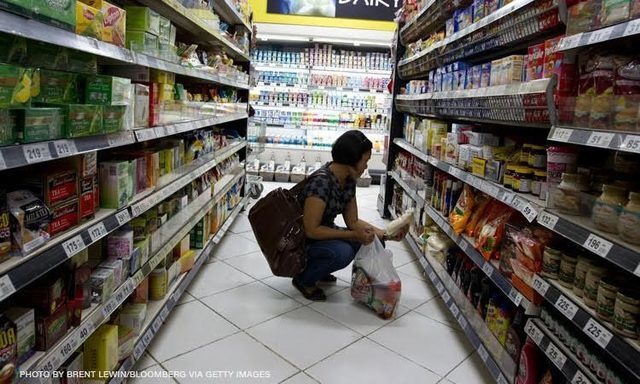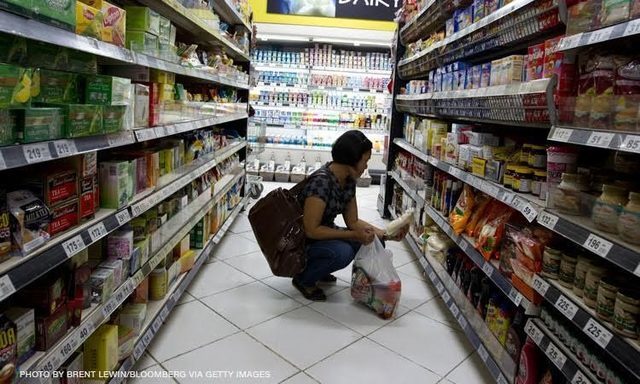
INFLATION may have slightly eased in September but Filipinos should still brace for higher commodity prices on account of more expensive oil products, according to local economists and the National Economic and Development Authority (Neda).
On Tuesday, the Philippine Statistics Authority (PSA) reported that inflation eased to 4.8 percent in September from the 4.9 percent posted in August. However, this remained higher compared to the 2.3 percent posted in September 2021. (See: https://businessmirror.com.ph/2021/10/05/inflation-eases-to-4-8-in-sept-on-lower-transport-food-costs/)
Socioeconomic Planning Secretary Karl Kendrick T. Chua admitted to the BusinessMirror that as oil prices continue to increase, it becomes a bigger threat to higher inflation in the Philippines because the country remains a net food and oil importer.
“The higher [oil prices reach] the more concern [it is for the economy] as we are importers,” Chua told the BusinessMirror. “[However], we have the policies in place to counter that.”
Chua said these policies, including EOs (Executive Orders) 133 and 134 have helped stabilize pork prices. The government adopted EOs 133 and 134 in May 2021 to help increase the supply of pork in the country amid its shortage due to the African Swine Fever.
These interventions increased the minimum access volume (MAV) for imported pork, and imposed a temporary reduction of pork tariffs, respectively.
To help augment fish supply in the approaching closed fishing season, the Department of Agriculture issued a Certificate of Necessity to Import (CNI) with a maximum importable volume of 60,000 metric tons of small pelagic fish such as galunggong, mackerel, and bonito for wet markets, he added.
Chua stressed that government will also proactively monitor the supply and demand of fish and immediately issue supplemental CNIs as necessary.
Housing, utilities, fuels up
Based on PSA data, National Statistician Claire Dennis S. Mapa told the BusinessMirror that inflation for Housing, Water, Electricity, Gas and Other Fuels have been increasing both for all income households and the bottom 30-percent income households.
Inflation for Housing, Water, Electricity, Gas and Other Fuels for all income households at 3.8 percent in September was the highest since February 2019.
For the poorest Filipinos or the Bottom 30 percent, inflation for Housing, Water, Electricity, Gas and Other Fuels reached 3.4 percent in September, the highest since August 2019.
The increase in inflation for this commodity group was mainly due to more expensive electricity and liquefied petroleum gas (LPG) prices.
For all income households, inflation for electricity shot up to 9.2 percent in September from only 6.6-percent inflation in August 2021 while LPG inflation surged to 19.7 percent in September 2021 from 17.6 percent in August 2021.
For the bottom 30-percent income households, Mapa said electricity increased to 8.3 percent in September 2021 from 6.6 percent in August 2021 while LPG recorded an inflation of 19.8 percent in September 2021 from 17.7 percent in August 2021.
Further, Mapa said that for the poorest Filipinos, the price of kerosene also increased inflation for Housing, Water, Electricity, Gas and Other Fuels. Kerosene prices increased 21 percent in September from 18.2 percent in August.
“The contribution of housing and utilities to inflation has also expanded as electricity rates continue to rise. Energy companies have adjusted their costs as a response to global oil prices and Peso depreciation,” BPI’s Global Markets analysis stated.
While oil prices are not expected to hit $100 per barrel this year, Former University of Asia and the Pacific (UA&P) School of Economics Dean Peter Lee U said the recovery of economies as well as mobility in other countries will drive up demand for oil and increase its price.
This is expected in the short term since, U said, the heating needs in countries that experience winter will increase demand for oil in the coming months.
For the long haul, U said, the demand for oil will largely depend on how well countries are able to recover from the pandemic.
“Depends on how strong global economic recovery goes which in turn depends on the pandemic,” he told this newspaper. “Hitting 100 [dollars per barrel] might be a stretch though for this year.”
However, UnionBank Chief Economist Ruben Carlo O. Asuncion told the BusinessMirror high oil prices in the international market are already affecting local pump prices.
Apart from the reasons cited by U, Asuncion noted the Organization of the Petroleum Exporting Countries (Opec) still did not reach an agreement to increase oil supply, despite a clamor on account of the recovery of countries from the pandemic.
Asuncion said if Opec does not decide to increase global oil supply, high oil prices will likely persist until next year, at least in the first quarter.
“If Opec does not adjust current supply levels, this scenario [high oil prices to persist in January to March 2022] is very likely. Something [we do] not need as we try to recuperate from this pandemic,” Asuncion said.
Food inflation eases
Meanwhile, Neda said food inflation decreased to 6.5 percent in September from 6.9 percent in August, due to slower inflation rates in rice, fish, and meat.
Rice inflation recorded zero growth, following the issuance of Executive Order 135. Likewise, fish inflation decelerated to 10.2 percent from 12.4 percent.
Meat inflation decreased to 15.6 percent from 16.4 percent, as pork inflation declined to 36.4 percent from 39 percent.
Moreover, month-on-month meat inflation continued to decline at -1.6 percent, suggesting some price stabilization following the implementation of EOs 133 and 134.
Meanwhile, inflation for the bottom 30-percent income households at the national level slowed down to 5 percent in September 2021, from 5.3 percent in August 2021. In September 2020, it was posted at 2.8 percent.
The country’s average inflation for this particular group of consumers from January to September 2021 was registered at 4.9 percent.
“The downtrend in the inflation for the bottom 30-percent income households during the month was primarily due to the slower annual increase of the transport index at 4 percent, from its double-digit annual growth rate of 10.4 percent in August 2021,” PSA said.

